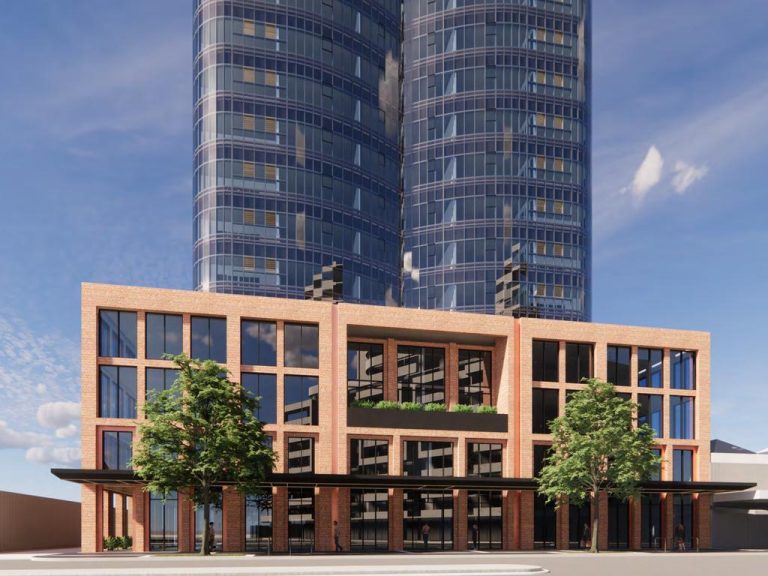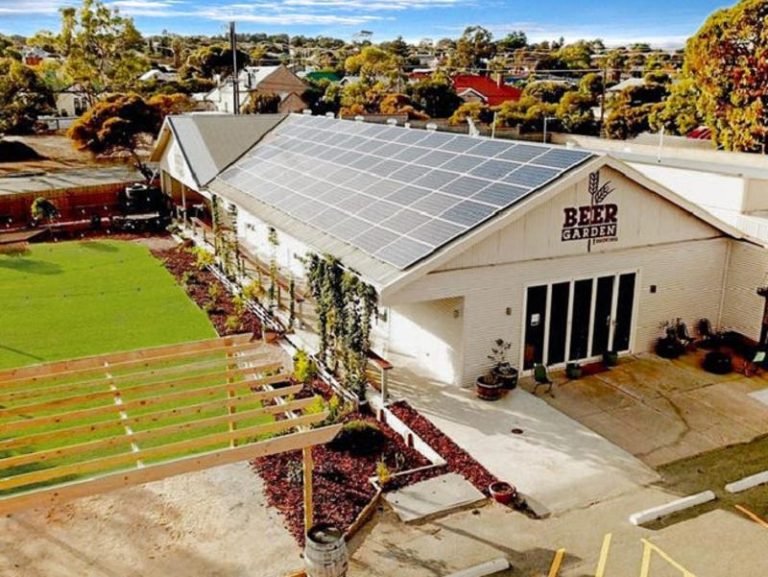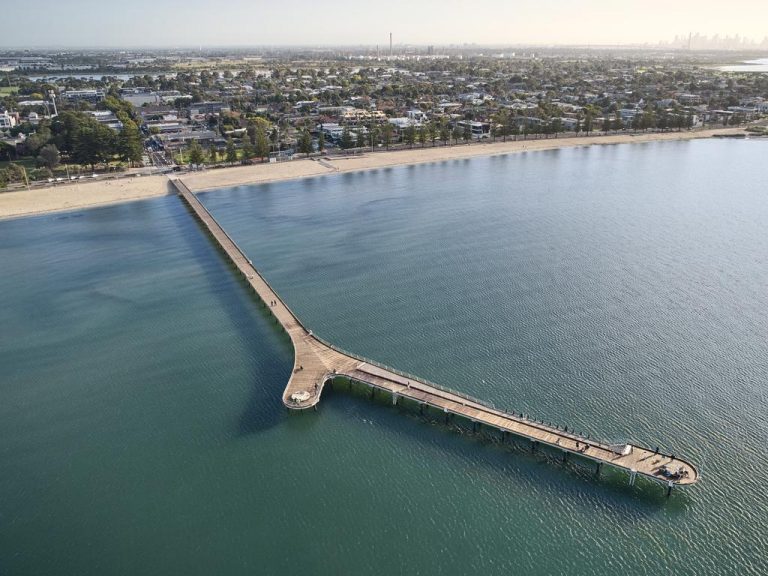Goodman Group plans drive into data centres

Goodman is also increasingly focused on the development of large data centres which are seen as the driver of its future and it is moving ahead locally with a series of projects.
Industrial property powerhouse the Goodman Group is in talks with global funds manager Barings about selling it an industrial portfolio worth up to $800m.
The deal would see the international funds house acquire a series of properties in Sydney and Melbourne, bolstering its portfolio, which has been supported by major local superannuation funds. Superannuation funds are expanding their exposure to industrial property amid confidence the sector remains a key area of opportunity to deliver long-term value to members.
On the ground, the industrial property world is being transformed by the advent of data centres which are trading at prices that confound traditional metrics amid surging demand that is being driven by the AI revolution.
Goodman is leading the charge among traditional property companies but other major groups are also looking to get in on the action to boost returns, which is spurring trading of existing industrial assets.
Superannuation fund heavyweight Rest last year announced a $1bn industrial property partnership with Barings – which acquired Altis Property Partners – and bought a large prime industrial asset from Charter Hall.
Although parties have declined to comment, industry players have been watching the deal as a sign of the depth of demand for industrial assets, as there have been few large portfolio deals since the market was repriced last year.
Barings has effectively been investing in Australian real estate for 15 years and has more than $6.3bn of local real estate assets, with about 50 real estate investments nationally, and last year unveiled the $1bn venture.
Barings last year cited the attraction of industrial real estate in Australia on a long-term basis and flagged its ambition to continue to seek out both development and value-add opportunities across the major metropolitan markets of Australia.
It also called out the sector’s historically tight vacancy rates, sustained tenant demand, and strong long-term outlooks. When it bought a property from Charter Hall last year Barings said it would focus on moves such as leasing initiatives to improve the income profiles and targeted spending to expand the operations.
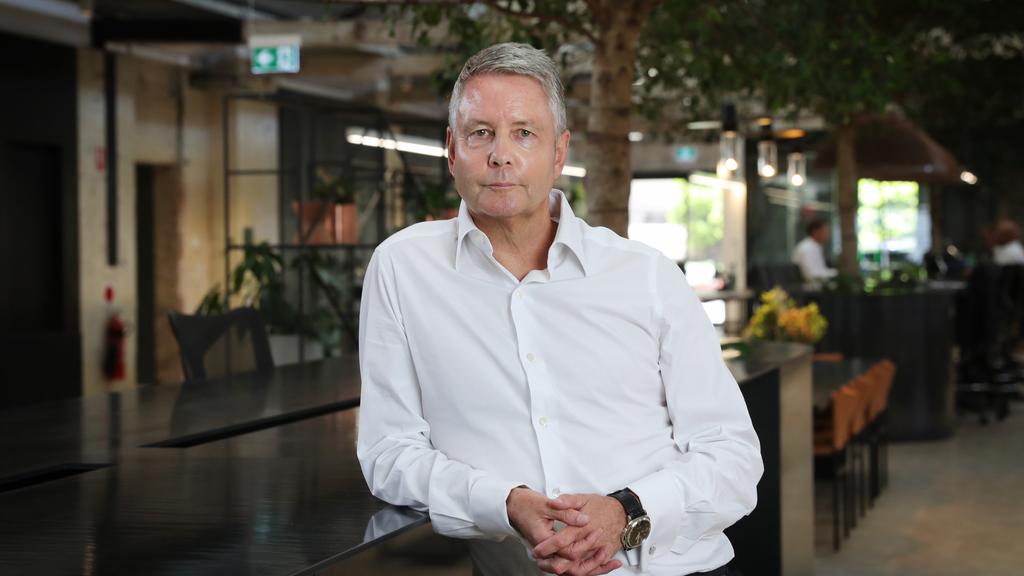
Goodman Group chief executive Greg Goodman. Picture: John Feder
The deal is in keeping with Goodman’s model of developing and leasing up and finding the best home for its properties. This is most often in its funds network, with both local superannuation funds and offshore pension groups investing, but it is also famed as an asset seller due to its conservative stance on gearing.
Last month, Goodman sold the Eumemmerring Business Park to Aware Real Estate as part of that fund’s strategy to acquire premium industrial properties.
The property at 10-36 Abbotts Rd, Dandenong South, is a 6.4ha site with a gross lettable area of 30,500sq m over four tenancies, including Gold Peg, WAM Australia, Zipform Rigid Packaging, and PC Case Gear.
Aware Real Estate chief executive Michelle McNally said that the acquisition in the “sought after southeast Melbourne market, aligns with our investment strategy of investing in large scale prime industrial and logistics properties within core precincts along the Eastern seaboard”.
Goodman is also increasingly focused on the development of large data centres which are seen as the driver of its future and it is moving ahead locally with a series of projects.
It last year unveiled a move to becoming an “essential infrastructure provider” and in February chief executive Greg Goodman said the company’s global power bank had grown to 4 gigawatts, with the company having the chance to develop data centres worth up to $80bn in the coming five to seven years.
Citi analysts Howard Penny, Suraj Nebhani and Akshit Batra see Goodman’s upcoming quarterly update in May as potentially positive due to the company’s continued progress on its data centre pipeline. This includes 2.1GW of secured pipeline of which they estimate only about 400MW is included in the company’s $12.9bn development work in progress.
On the data centre front, Goodman is set to build a 126MW data campus on former Castrol HQ in Sydney, and Citi said that this, together with previous projects, was driving medium term growth.
The Sydney development, known as Project Pluto, would see two three-storey data centres developed by the company. The buildings would offer 126MW across 37,090sq m, including about 5,500sq m of offices.
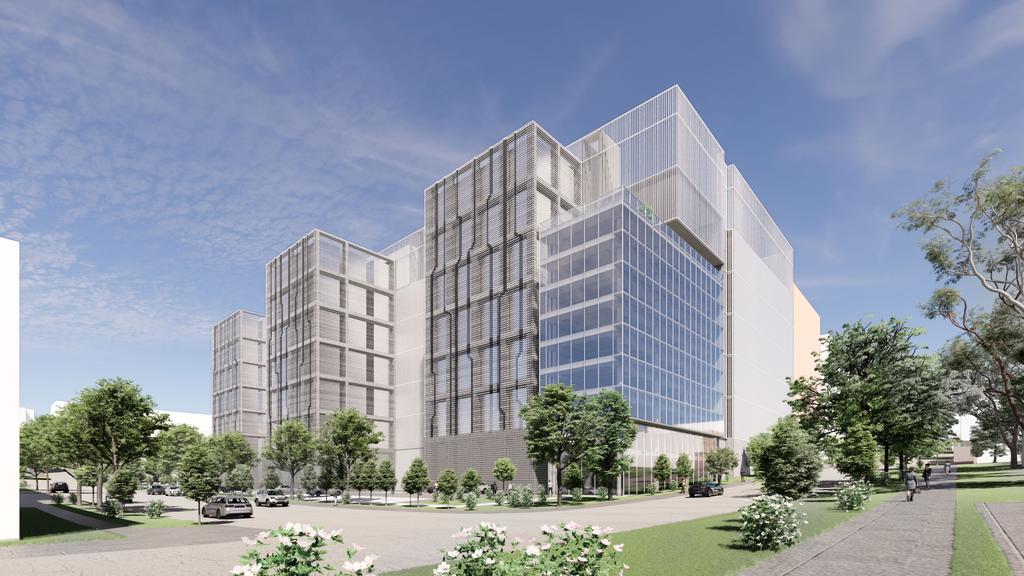
An artist impression of a proposed Goodman Group data centre development in Sydney.
The company plans to invest $2.5bn in the project, in which it is switching away from earlier plans to develop three warehouse buildings on the site, and would take on partners to complete a development of that size.
“In our view, the conversion opportunity of Goodman’s assets from traditional warehouses into data centres presents a robust growth opportunity,” Citi said.
Goodman said its 4GW global power bank would be across 12 major global cities and Citi estimated about 90 per cent would be from converting existing warehouses and other assets. The analysts estimated a global power bank of this scale to be worth $50bn total cost of production in a full turnkey development. But they did not expect Goodman to roll out the entire development and said it would instead consider the best value enhancing opportunities asset-by-asset.
CLSA analysts James Druce and Adam Clavetti have just reviewed their forecasts for Goodman’s development margins and raised them 1 per cent to an average of 25 per cent over the next five years. They also lifted their target price to $35.60 but downgraded their rating to outperform after the stock’s strong run.
“Goodman remains a top pick, but is up 31 per cent the past three months and we expect momentum to ease as we wait for more news on data centre development starts, which we expect later in the year,” they said.
CLSA said there was room to push development margins a further 2 per cent to 27 per cent based on data centres growing to two-thirds of completions with about half originated on the company’s balance sheet. Such projected returns, make data centres the future.

